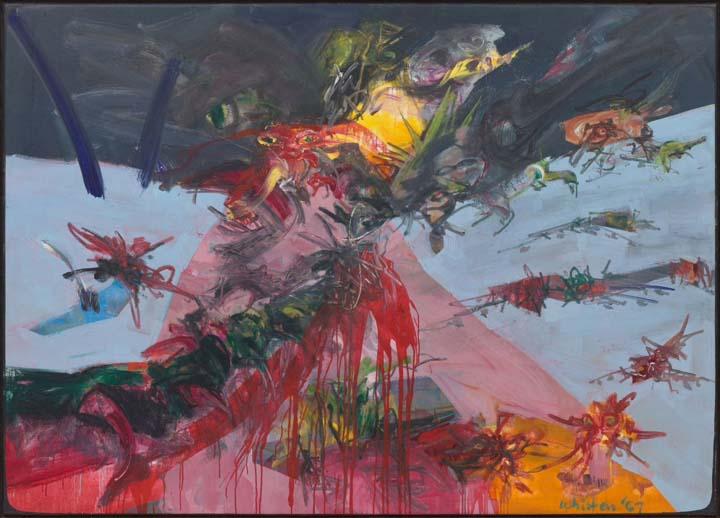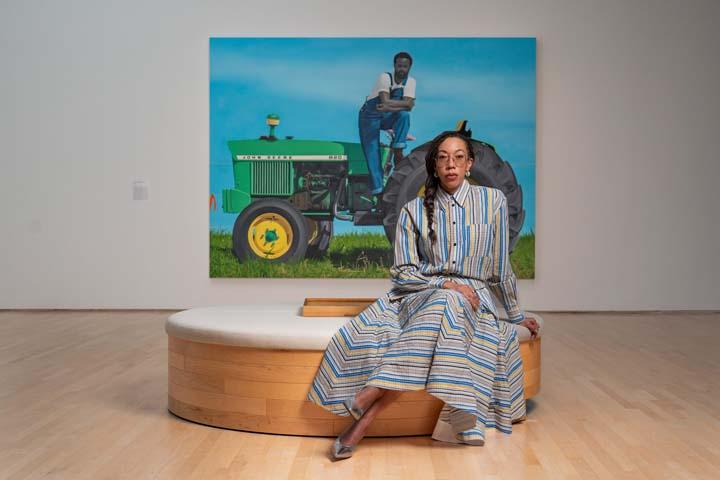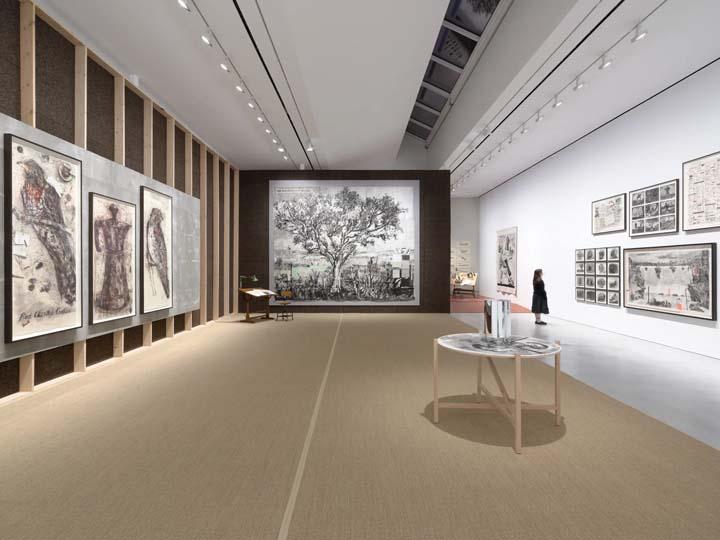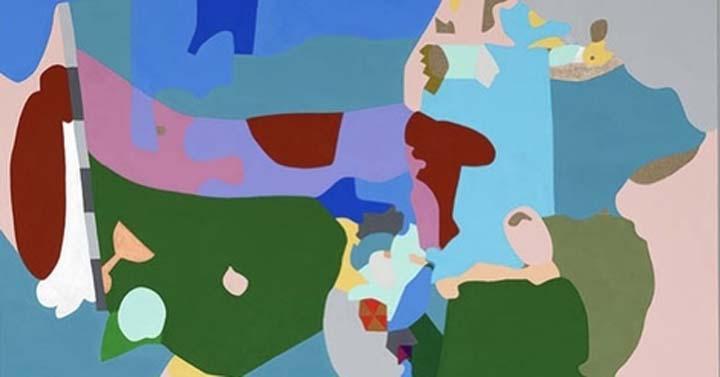DIARY: Don't Miss Shows Closing Soon
Friday, August 1: William Kentridge | A Ntural History of the Studio at H&W
With A Natural History of the Studio, renowned South African artist William Kentridge presents his acclaimed episodic film series ‘Self-Portrait as a Coffee- Pot’ with more than seventy works on paper integral to its creation and an array of sculptures at 542 West 22nd Street. This immersive exhibition is the first ever to present all the drawings from this filmic masterpiece, hailed by critics as a moving, witty and ultimately wondrous synthesis of the personal and the political, the individual and the universal. Spanning two floors of the gallery’s 22nd Street building, the exhibition also extends to the gallery’s 18th Street location with a concise survey of Kentridge’s printmaking practice.
Through a blend of Kentridge’s signature stop-motion technique, live action performance and philosophical dialogue, ‘Self-Portrait as a Coffee-Pot’ delves into subjects like Greek mythology, the history of mining in Johannesburg, colonialism in Africa and Soviet absurdities. And here, as in his wider body of work, the seemingly mundane and familiar household coffee pot becomes a stand-in for the artist, an avatar of the art-making process in which a steady flow of ideas is akin to the bubbling of coffee brewing. In several episodes of the series, Kentridge is joined by collaborators and assistants; in others he is seen debating and squabbling with a series of doppelgängers in a playful externalization of his internal creative struggles.
Hauser & Wirth, 542 West 22nd Street and 443 West 18th Street, New York NY Info

Saturday, August 2: Jack Whitten | The Messenger at MoMA
This retrospective is the first to span all six decades and every medium of Whitten’s innovative practice, and features more than 175 paintings, sculptures, and works on paper that illuminate his singular artistic journey. presents a revelatory history of the artist’s exploration of race, technology, jazz, love, and war. From the upheaval of the 1960s to the end of his life in 2018, Whitten faced great pressure to pursue representational art as a form of activism. Yet he dared to invent forms of abstraction—and offered the world a new way to see.
In the 1970s, Whitten experimented with pulling layers of acrylic paint across a floor-bound canvas in a sweeping movement, producing a luminous, quasi-photographic blur. In the 1990s, he cut hardened sheets of acrylic paint into thousands of mosaic tiles to assemble richly textured paintings that suggest pixels or galaxies. For decades, Whitten spent his summers in Greece, constructing sculptures that fused the arts of Africa and the ancient Mediterranean with contemporary technologies. He often dedicated his works to figures in Black history, as if he were a messenger—and his art a way of sending meaning out into the world. “I am a conduit for the spirit,” he declared. “It flows through me and manifests in the materiality of paint.”
Jack Whitten: The Messenger presents a revelatory history of the artist’s exploration of race, technology, jazz, love, and war. From the upheaval of the 1960s to the end of his life in 2018, Whitten faced great pressure to pursue representational art as a form of activism. Yet he dared to invent forms of abstraction—and offered the world a new way to see.
Can’t get th the show? Watch this video: Meet Jack Whitten, the shape-shifting artist and innovator who pushed the boundaries of abstraction by imbuing his materials with history, politics, and emotion.
This short film offers a rare glimpse into Whitten’s studio in Queens, New York, a former firehouse he turned into a laboratory for acrylic paint, which remains largely untouched since his passing in 2018. The studio was also a research space for his groundbreaking creative process. Whitten made his tools and art materials by hand, constantly inventing new approaches to art-making—from blur paintings that appear almost photographic to large-scale mosaics, resembling constellations of stars, that he cut from hardened sheets of acrylic paint.
Museum of Moder Art, 11 West 53rd Street, New York, NY Info

Sunday, August 3: Sargent and Paris at The Met
Sargent and Paris begins with the 18-year-old artist’s arrival in Paris in 1874 to pursue his ambition to become an artist. The precocious drawings and sketches that impressed his fellow students in the atelier will be featured along with his evocative paintings of the French capital. Across the decade that followed, Sargent was immersed in a cosmopolitan circle of artists, writers, and patrons, as he navigated a successful path through the French exhibition system, achieving acclaim and awards. This formative decade culminated with the portrait he later described as “the best thing I’ve done,” the infamous Madame X. The exhibition will present a nuanced understanding of the painting at the heart of a scandal that is as infamous now as it was in 1884 along with an appreciation for the originality and brilliance of Sargent’s art, underpinning the more sensational aspects of artistic society in 1880s Paris.
Over the course of this pivotal period, Sargent achieved increasing recognition with his bold, ambitious portraits and genre scenes. The style for which he is now renowned was cultivated through in-depth study of the great art of the past and present, deftly adapted for the colorful, high-octane Parisian society in which he had become resident. As a seasoned traveler from a young age, Sargent also found subjects through excursions in France, Italy, the Netherlands, Spain, and North Africa.
The Metropolitan Museum of Art, Gallery 899/FL2, 1000 Fifth Avenue, New York, NY Info
Sunday, August 3: Candida Alvarex | Circle, Point, Hoop at El Barrio
This exhibition, spanning 48 years of Candida Alvarez’s bold, vibrant practice, is a celebration of color, culture, and artistic vision that highlights her evolution through painting, drawing, and collage. Exploring the interaction between abstraction and figuration, with a focus on her experience as a female artist in a predominantly male environment, it begins with figurative works that reflected her identity as a diasporic artist. In the 1990s. Alvarez emerged in the New York art scene beginning in the late 1970s. She began collaging conceptual strategies into her figural works, experimenting with materials and representational systems.
In addition to earlier experiments with paint, embroidery, and assemblage, the El Museo exhibition also spotlights later work, like Alvarez’s “Air Paintings” [above] The suite of latex ink and enamel compositions on PVC mesh hang from aluminum armatures and can be viewed from the back and front. The series, which made a stir when it debuted at Monique Meloche Gallery in Chicago in 2020, came out of Alvarez’s anxiety following Hurricane Maria in Puerto Rico. (Her parents are from the island and have a family home in Ponce.)
El Museo del Barrio, 1230 Fifth Avenue, at 104th Street New York, NY Info

Sunday. August 10” Amy Sherald | American Sublime at the Whitney
Amy Sherald creates precisely crafted narratives of American life, selecting, styling, and photographing her sitters as the foundation for her nuanced paintings. Thus, while Sherald (b. 1973; Columbus, Georgia) bases her works on specific people, they are more than traditional portraits. They center everyday Black Americans, compelling in their individuality and extraordinary in their ordinariness, inviting viewers to step into Sherald’s imagined worlds. In this exhibition, paintings of such ordinary Americans join her iconic portraits of First Lady Michelle Obama and, heartbreakingly, Breonna Taylor, to produce a resonant ode to the multiplicity and complexity of American identity.
Sherald also makes the images she wants to see in the world. Although she considers herself an inheritor of the American Realist tradition of artists such as Edward Hopper—a genre that was central to the Whitney’s origins nearly a century ago—those artists focused on the lives of everyday white Americans. Instead, Sherald privileges a population that has historically been omitted from art history and wider visual representation. By doing so, she challenges viewers to think more broadly about American Realism, suggesting an additional lineage for it: one born from the art departments and galleries of Historically Black Colleges and Universities (HBCUs), where she first trained as an artist, and one that includes such underrecognized figures as William H. Johnson, Archibald Motley, and Laura Wheeler Waring, among others.
Here, Sherald’s contemplative subjects appear most concerned with their own interiority, prioritizing their own peace and self-realization over how others might perceive them and the shackles of history, though they are inevitably impacted by both. Her audacious project highlights what she has called the “wonder of what it is to be a Black American,” rendering a rich and unconstrained Black world in vibrant Technicolor. This exhibition includes a billboard across from the Museum’s entrance on Gansevoort Street. Note: the final stop on this exhibition tour, at The Smithsonian, was cancelled by the artist due to concerns about censorship. Info
Whitney Museum of American Art, 99 Gansevoort Street, New York, NY Info




